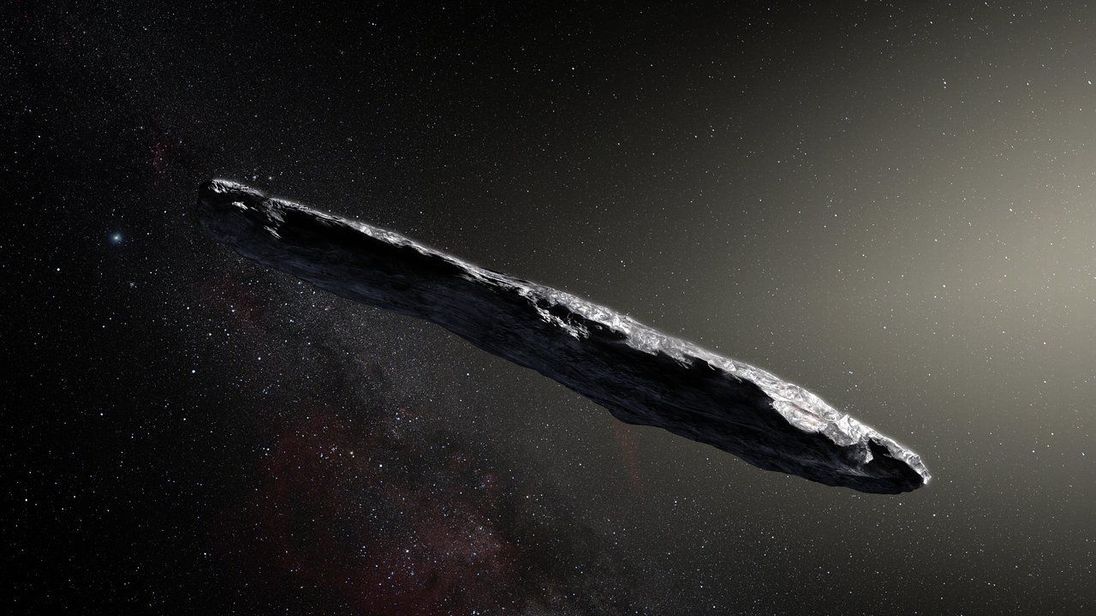Scientists from Queen's University Belfast have been examining the curious space object ever since it was spotted in our solar system in October.
The team, from the university's school of mathematics and physics, have been analysing the asteroid alongside international colleagues.
Oumuamua is not spinning periodically like most small asteroids, they say, but rather tumbling - spinning chaotically - and has probably been doing so for billions of years.
They believe this happened following a violent collision with another asteroid at some point in its past - a crash which tossed it violently away from its original solar system and into interstellar space.
Dr Wes Fraser, lead author of the study, said: "Our modelling of this body suggests the tumbling will last for many billions of years to hundreds of billions of years before internal stresses cause it to rotate normally again.
"While we don't know the cause of the tumbling, we predict that it was most likely sent tumbling by an impact with another planetesimal in its system, before it was ejected into interstellar space."
The researchers say Oumuamua has curious properties, including that it seemed to change colour between measurements.
The tumbling explains this, they say, because Oumuamua's surface is spotty - this means that when the long face of the cigar-shaped asteroid was facing Earth, it seemed red, but the rest of it had a neutral colour.
"Most of the surface reflects neutrally but one of its long faces has a large red region. This argues for broad compositional variations, which is unusual for such a small body," said Dr Fraser.
The findings of the research into - as far we know, the only body to have ever flown so near to us from outside of our own solar system - have been published in Nature Astronomy.
Additional authors include Dr Petr Pravec, from the Academy of Sciences of the Czech Republic; Dr Colin Snodgrass, from The Open University; and Igor Smolic, ́from the University of Belgrade.
"We now know that beyond its unusual elongated shape, this space cucumber had origins around another star, has had a violent past, and tumbles chaotically because of it," said Dr Fraser.
"Our results are really helping to paint a more complete picture of this strange interstellar interloper. It is quite unusual compared to most asteroids and comets we see in our own solar system."
